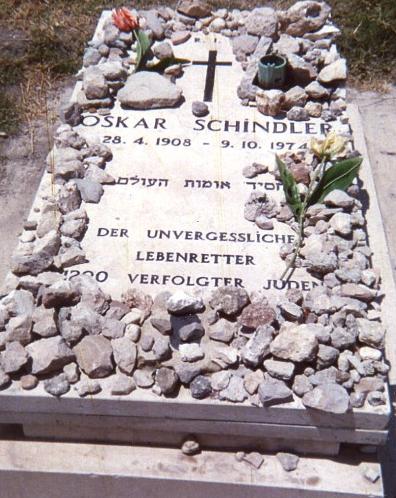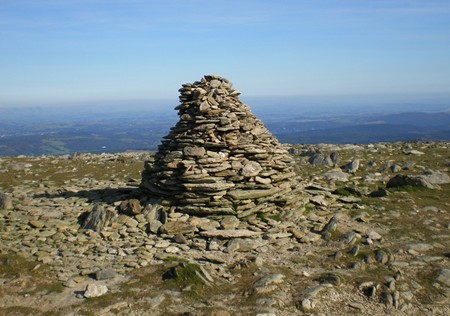Leaving a small stone on a gravesite is a gesture recognizable from Hollywood film, which reflects a centuries-old practice found in both Jewish and pre-Christian European traditions. While the practice has historical and cultural origins, it has in recent years become adopted across spiritual groups and secular demographics as a simple and heartfelt way to commemorate the life of a loved one.

Credit: adventuresincemeteryhopping.files.wordpress.com
In the Talmud (the holy book of Judaism), there is mention of spices and twigs being used to commemorate grave sites, but leaving flowers — which dates back to prehistoric times in several parts of the world — is generally considered to be a pagan practice. In the context of Judaism, the placing of stones upon a grave can indicate several things. The simplest of these is a gesture from someone who has been there to remember the dead person in a good way. A stone is an apt symbol of enduring memory, because they outlast the brevity of life. As per the Old Testament story wherein Abraham prepares to sacrifice his son Isaac upon God’s command, the altar prepared for this sacrifice is called “even hashityah,” the foundation stone of the world. While “even” is Hebrew for “stone,” its root words “av” and “ben” both signify continuity.
Judaism refers to God as the “Rock of Israel,” so the placing of stones upon the gravesite is a way for the living to welcome in the presence of God to bring home the soul of the dead. The phrase “teheye nishmato tsrurah b’tsror ha- chayyim,” meaning “may his soul be bound up in the bonds of eternal life,” is often engraved upon Jewish tombstones. “Tsror” means “pebble” and hearkens back to ancient times when shepherds would keep track of their flock with a pebble count in a bag they’d carry over their shoulders. It is by this phrase and the placing of a pebble that the living ask God to carry and take care of the soul of their loved one.

Credit: largeoutdoors.com
Littered across ancient Europe is evidence of another kind of relationship between the living and dead, also expressed through stone. Cairns are rock stacks or altars that may serve the purpose of burial mounds, as well as directional or commemorative monuments. A practical reason for creating a cairn as a burial mound was to keep wild animals from disturbing remains in a shallow grave. Another reason was to keep the spirit of the dead contained within the grave so as to not wreak havoc with the living.
Whatever your belief about the afterlife and the nature of the soul, using a stone to meditate upon lasting memories and the brevity of life is a simple and accessible practice at graveside or anywhere you may feel called to pause and reflect.

 Sealing a Gravesite with Stones: A Cross-Cultural Tradition
Sealing a Gravesite with Stones: A Cross-Cultural Tradition


 “In Case You Don’t Live Forever” by Ben Platt
“In Case You Don’t Live Forever” by Ben Platt
 Our Monthly Tip: Make an “In Case of Death” File to Ease Loved One’s Grief
Our Monthly Tip: Make an “In Case of Death” File to Ease Loved One’s Grief
 Passing of Beloved Comedian Births a New Comedy Festival
Passing of Beloved Comedian Births a New Comedy Festival














